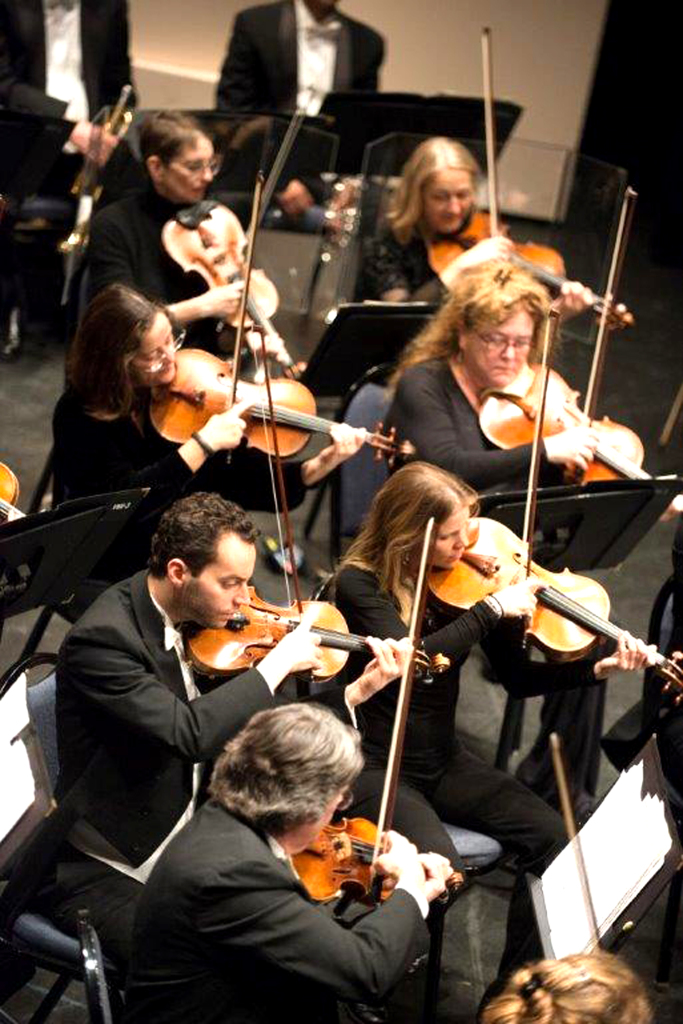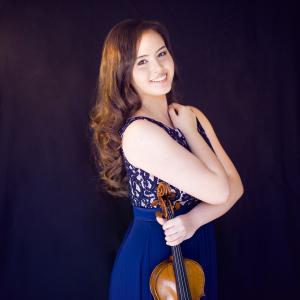Golka gave an interesting and informative talk before the show, explaining a little of the history behind the day’s musical selections and, even more interestingly, what makes each piece unique. He explained, for example, how Tchaikovsky captures a “carefree, Italian atmosphere” in his Capriccio italien, Op. 45, while maintaining the subtle repetitive phrasing that is predominant in classical Russian music. He likened that piece to Rimsky-Korsakov’s Capriccio espagnol, which opened the second half of the day’s performance and likewise captures a foreign style, in this case Spanish dance music, while retaining the same repetitive phrasing.
Golka described Korsakov’s “uncanny ability to create colors” by combining different technical elements in unique and appealing combinations, contrasted his technique with that of German composers like Beethoven and Bach, who were known to build upon a simple theme. Korsakov tended to contemplate a singular image from several different aspects, in other words, while the Germans focused more on developing a mathematical structure.
When Golka returned to the stage a half hour later for the opening piece, Rossini’s Overture to the Barber of Seville, he immediately cued the orchestra to begin, diving right into the deep end — a momentous beginning that would have awoken anyone in the audience who may have nodded off after the lecture portion of the afternoon. The brass were ready and made a clear and assertive entry. The Overture is a delightful piece that holds a listener’s attention with its definitive passages, alternating profoundly between sweet, lulling quiet and exultant bang.
The conductor paused before beginning the second piece, the Capriccio italien by Tchaikovsky, to explain a little more about the nature of the work. Golka has a wonderful enthusiasm for sharing his love of great music, an aspect of his presentation that was especially apparent as he regaled the audience with his description of the tarantella musical style that figures into the Tchaikovsky work. “Tarantella” comes from the word for tarantula, he explained, and the excited nature of the tarantella can be likened to the response one may have to an encounter with the fear-inspiring critter.
The Capriccio starts off with a bang, and once again the orchestra’s brass came in strong and bright, beginning with trumpet and expanding to include a powerful brass complement. While the string sections were also bright, their timing was not sharp and that created a distraction from the happy spirit of the tune. The most joyful parts came from the winds, especially the sweet-sounding upper registers of the bassoon, and the most playful sounds emanated from a delightful variety of percussion instruments. The piece concluded well, ending on a clear and triumphant crescendo of combined sound.
Concluding the first half of the concert was a gorgeous solo performance by violinist Alina Ming Kobialka in the Introduction and Rondo capriccioso for Violin and Orchestra by Saint-Saëns. Kobialka’s sensitive playing was spellbinding, easily the highlight of the day’s program. Golka made the best possible use of her fine artistry, focusing on her as his cue to lead the orchestra in their corresponding parts. It was a winning strategy and a most enjoyable result. It felt as if the entire orchestra was responding to Kobialka’s familiar style, sounding more cohesive than they did in any other piece that day.After a brief intermission, Golka again returned to the stage with a bang, cuing up the orchestra without pause for the Capriccio espagnol, Op. 34 by Rimsky-Korsakov. The happy, serene sound evoked a pleasant image of clear, flowing water dancing over pebbles in a gentle brook. Winds played sprightly scales that swept up and back down like delicate waves. As the harp came in with its flirtatious song, it seemed to float over a sweet, steady pulse from melodic winds and rhythmic strings. Exquisite timing from a small percussion complement enhanced the pleasant flow until the piece culminated in an exultant finish.
Golka then took a moment to introduce the next piece, the emotional Valse triste, or “Death Waltz,” Op. 44 No. 1 by Sibelius. The piece describes a man sitting by his mother’s side at her deathbed. Starting out understandably somber, the piece leaps into periods of celebratory dance — as if the woman were deliberately recalling the happiest moments of her life — before it relaxes into a final, whispering breath.
“A beautiful melody,” Golka said of the piece’s most obvious appeal, “but also let it take you into this small, dark room.” He spoke of a delirium evident in the dance segments of the piece, but it was toward the end, with an extended trembling bass, that the greatest sense of personal, anxious delirium could be felt.
The concert concluded with Aaron Copland’s “Four Dance Episodes from Rodeo,” a symphonic arrangement of the composer’s 1942 ballet. While the piece concluded with a happy string of polished phrases, the symphony’s lack of cohesion was especially apparent here. The piece involves a number of synchronized stops and starts and since that was the greatest weakness of the ensemble Sunday, their execution fell short of communicating the special tone of the composition.
The California Symphony is a polished group of musicians. Even considering the sometimes awkward union with their guest conductor Sunday, the musicians’ talent shone through in extended segments, especially in the delightful Rimsky-Korsakov Capriccio and the emotional Rondo for violin and orchestra by Saint-Saëns.
I am intrigued by their potential and eager for an opportunity to hear the symphony again under the direction of their regular conductor.
If You Go
The California Symphony’s next performance will be the season finale, “Golka and Grieg,” Sunday, May 3 at the Lesher Center in Walnut Creek. Tickets start at $40, $15 for youth 18 and under and college students with ID. For more information call 925-280-2490 or visit californiasymphony.org.
Elizabeth Warnimont is a freelance writer specializing in the performing arts. She is also a substitute teacher for the Benicia Unified School District.








Leave a Reply